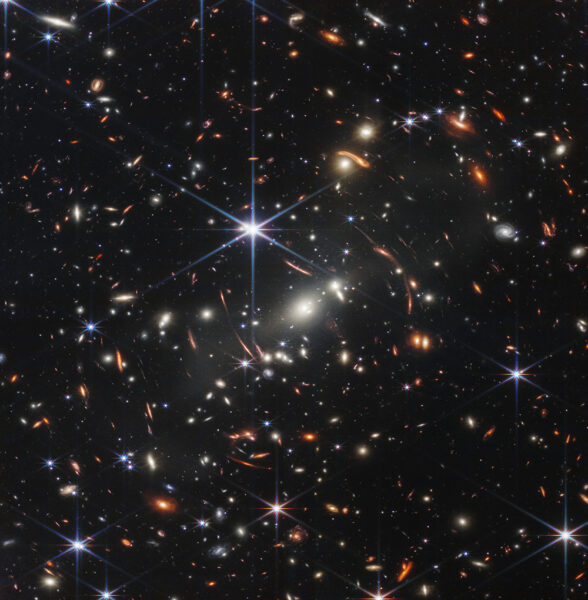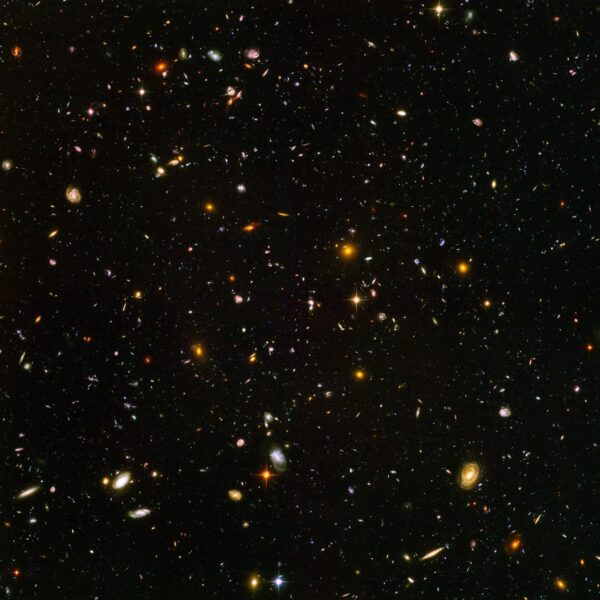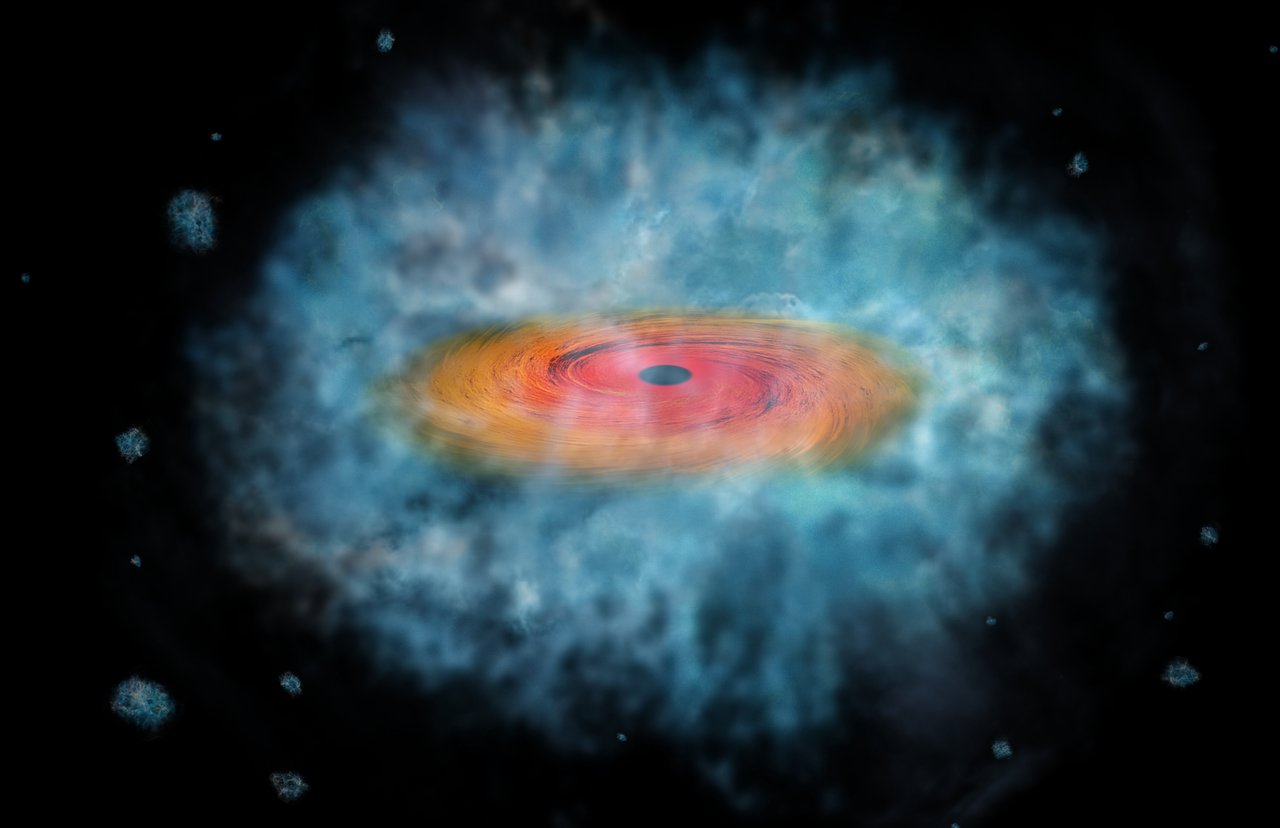The James Webb Space Telescope’s first year of observations promises to reveal exoplanet atmospheres and surfaces, infant galaxies, and maybe even the first black holes.

NASA / ESA / CSA / STScI
On Monday and Tuesday, July 11th and 12th, the James Webb Space Telescope team released the observatory’s long-awaited first images. From a Jupiter-size planet just 1,150 light-years away to galaxies residing in the early universe, the images represent the tip of the iceberg — we have so much more to look forward to.
In its first year, Webb will take 6,000 hours of observations, amounting to 250 days’ worth of nonstop cosmic revelation. More than half of this time will go to small programs, each of which will receive at most 25 hours. By the end of the first year, we’ll have thousands of targets — ranging from comets to planets to distant galaxies — with unprecedented infrared imagery and spectroscopy.
Here’s what the first year of observations could tell us, as told from the perspective of a selection of science programs in the queue.
Closing in on Lava Worlds
This video shows an artist's impression of the super-Earth 55 Cancri e moving in front of its parent star.
ESA / Hubble, M. Kornmesser
Seventy of the accepted proposals focus on exoplanets, many of these on individual targets ranging from hot Jupiters to “super-puffs” (gas giants that are bigger than they ought to be) to hot rocky worlds.
The lava world 55 Cancri e is one of the latter. The planet has the mass of 8 Earths and orbits searingly near a Sun-like star, 100 times closer in than Earth is to the Sun. Although it was discovered in 2004, there’s a lot we still don’t know about this alien world. Is it bare rock or is it enveloped by a swirling atmosphere? And if it’s bare, could it still host vaporized minerals released from its magma surface? Is it tidally locked, showing only one face to its sun, or does its rotation overlap its orbit in a 3:2 resonance as Mercury’s does?
These are the questions that Alexis Brandeker (Stockholm University, Sweden) and colleagues seek to answer with just over a dozen hours of Webb observations, which he expects in November.
A bare, rocky world would have a silicate crust, as Earth does, but 55 Cancri e is so blazing hot that these silicates would vaporize from its molten surface in the day and fall back to the surface at night as lava rain. Webb will take a spectrum of the thin sliver of vapor that surrounds the planet, which becomes visible as the planet passes in front of its star. Multiple spectra could detect the silicon oxide gas on the dayside and the silicon dioxide crystals that fall in the evening.
If, on the other hand, the planet does have an atmosphere, Webb will see a spectral signature that will help investigate that gaseous envelope instead. Characterization of surfaces and atmospheres will be Webb’s key contribution in its first year, Brandeker says.
“I'm excited to see beautiful spectra of a whole array of exoplanets with JWST!” agrees Caroline Morley (University of Texas, Austin), who was involved in a proposal to observe another hot rocky exoplanet, LHS 3844b. “We'll learn detailed new things about larger planets (Jupiter and Neptune-sized), including their atmospheric compositions and climates. For smaller, rocky planets like LHS 3844b, I'm particularly excited to see what the composition of the surface looks like.”
This artist's animation depicts the exoplanet LHS 3844b, which is 1.3 times the mass of Earth and orbits an M-class star.
NASA / JPL-Caltech / R. Hurt (IPAC)
Unlike 55 Cancri e, LHS 3844b is almost certainly bare rock. Morley, team lead Laura Kreidberg (Max Planck Institute for Astronomy, Germany), and colleagues will explore it using a technique called emission spectroscopy. That means the light that Webb will capture comes from the planet itself — something that becomes more feasible at infrared wavelengths, in which stars shine less brightly.
“With JWST, we’ll actually be able to tell the difference between a solidified magma ocean (ultramafic), volcanic resurfacing (basalt — think Hawai‘i!), or a more granite-rich surface,” Morley says. “This is one of the best targets for these kinds of observations.”
Reaching Out to Distant Galaxies
You’ve heard of the Hubble Deep Field, a long look into the black space between stars that revealed hundreds of thousands of galaxies. Webb is set to extend the view.

NASA / ESA / S. Beckwith (STScI) and the HUDF Team
The proposal to conduct the next-generation Deep Extragalactic Exploratory Public (DEEP) survey, led by Steven Finkelstein (University of Texas, Austin), asks for over 120 hours to home in on the same area of sky covered by Hubble’s deep and ultra-deep fields. As Webb looks back through space and time, the image will ultimately span most of cosmic time, from 400 million years after the Big Bang to almost 6 billion years later. In certain regions, Webb might reveal galaxies from an even younger universe.
“We have seen galaxies 97% of the way back to the Big Bang,” says Dan Coe (Space Telescope Science Institute). “I am most excited to finally see objects that existed during that missing first 3%, the first 400 million years of the universe.”
What’s more, Webb will be seeing not just the large galaxies but the dwarf ones with less heft than the Magellanic Clouds, far smaller than what Hubble could capture. This sensitivity enables astronomers to explore galaxy evolution in all its stages. The data will also contain spectroscopy, a powerful tool to pin down how many and what types of stars are forming through cosmic time.
“Being public immediately, NGDEEP follows in the footsteps of the Hubble deep field programs, enabling the community to explore the power of Webb when pushed to its limits,” write Finkelstein and colleagues.
Other proposals zero in on some of the most distant galaxies known. Detected by Hubble, these galaxies will yield additional details to Webb’s instruments. Coe, for example, is leading observations targeting the galactic infant dubbed MACS 0647-JD. A gravitational cluster that lies in the foreground acts like a giant cosmic lens to magnify its light, aiding human-made telescopes. But Hubble, even with the help of this cosmic lens, couldn’t resolve the galaxy, which mean it’s really tiny — less than 300 light-years across. The Milky Way, by comparison, is 100,000 light-years and even its satellites, the Magellanic Clouds, span on the order of a few thousand light-years. This proto-galaxy is thus about the size of a single star-forming cloud in a modern-day galaxy.
Coe and colleagues expect Webb to actually resolve this tiny proto-galaxy, making out the structures within it and shedding light on the early era of star and galaxy formation. “Is this a building block of galaxies yet to come? We doubt it! We've seen much smaller structures in galaxies down to star clusters one parsec across,” Coe says. “This is what we want to see: Are the first galaxies made of multiple small clumps?”

NASA / CXC / M. Weiss
Webb’s extraordinary sensitivity is key to another science goal: identifying the seeds of the supermassive black holes that sit at the center of almost every large galaxy today. One proposal seeks to find them directly, having identified gas-gorging candidates by their X-ray emission, while other proposals seek to better understand the mechanics of already-discovered black holes several hundred million years after the Big Bang.
The distant universe isn’t the only purview for Webb: There are 22 proposals focusing on comets, gas giants, and trans-Neptunian bodies within our solar system, and another 42 targeting brown dwarfs, planetary nebulae, and other aspects of stellar evolution.
Each of the hundreds of programs to be conducted in Webb’s first year outline revolutionary science. But, of course, we don’t know what we don’t know, and within any one of the accepted proposals, there are possibilities we haven’t even imagined. It’s going to be an exciting year for astronomy!
 5
5









Comments
Rod
July 11, 2022 at 8:53 pm
"As Webb looks back through space and time, the image will ultimately span most of cosmic time, from 400 million years after the Big Bang to almost 6 billion years later. In certain regions, Webb might reveal galaxies from an even younger universe."
My note. Using cosmology calculators like https://lambda.gsfc.nasa.gov/toolbox/calculators.html or https://www.kempner.net/cosmic.php, looks like redshifts or z ~ 1 - 13 for study.
Impressive 🙂
You must be logged in to post a comment.
Monica YoungPost Author
July 11, 2022 at 8:58 pm
That's right, that was my translation of z~1-12, which was the range given in the observing proposal (I rounded) 🙂
You must be logged in to post a comment.
Vincent Cook
July 11, 2022 at 9:17 pm
With any luck, the James Webb Space Telescope will detect something totally unexpected at impossibly high redshifts, obliging Big Bang cosmologists to come up with at least a half dozen new, undetectable "dark" entities to explain the anomalous observations.
You must be logged in to post a comment.
Martian-Bachelor
July 12, 2022 at 4:12 pm
What are the prospects at 25 microns (the JWST upper limit) for the center of our own galaxy? Is the extinction too great even at that long a wavelength?
You must be logged in to post a comment.
Monica YoungPost Author
July 13, 2022 at 9:15 am
Infrared can pierce that veil of dust - in fact at least one of the proposals for Cycle 1 proposes observing the galactic center!
You must be logged in to post a comment.
You must be logged in to post a comment.